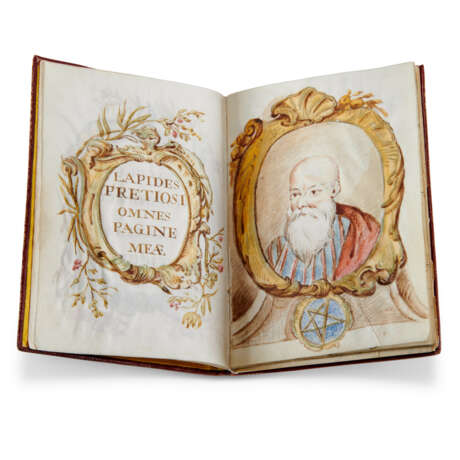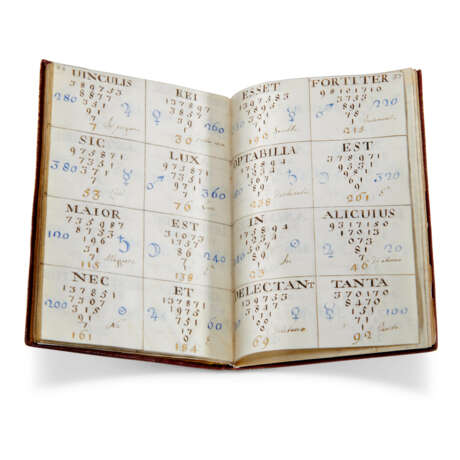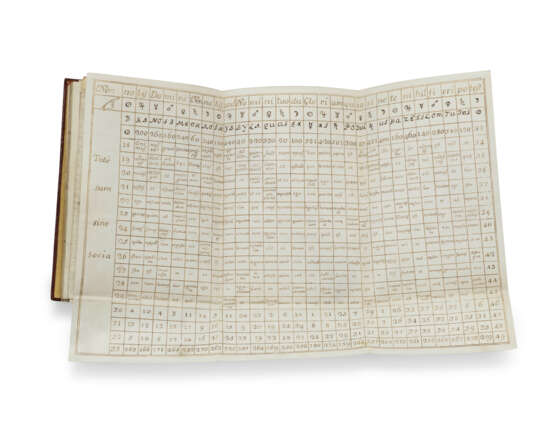ID 1105581
Lot 40 | Anonymous
Estimate value
£ 3 000 – 5 000
Oraculum salomonicum kabalisticum, in Latin and Italian, illuminated manuscript on vellum [Italy, mid-18th century]
A handsome illuminated kabbalistic manuscript full of elaborate computational tables, including two large fold-out tables, drawing on Seneca's Epistulae Morales ad Lucilium.
165 x 117mm. i (paper) + 24 + 2 fold-out tables + i (paper) leaves, complete, pagination 1-40 followed here, 1 title-page and 2 illuminated preliminaries within baroque cartouches: the first with 'Lapides pretiosi omnes pagine meae [sic]' (cf. Ezechiel 28:13); the second with a portrait of a bearded man (Solomon?) and a five-point star; two fold-out tables (see Content below) with 432-square grids each (a little offsetting to title-page). Contemporary Italian red morocco gilt (lightly scuffed).
Provenance:
Sotheby's, 9 December 2003, lot 60.
Content: 'Oraculum Salomonicum Kabalisticum' pp.1-39, each page divided into 8 segments headed by a Latin word (or words) drawn from the seventh book of Seneca's Epistulae Morales, with an Italian translation in a different but contemporary hand, below each word patterns of numbers (the last in gold) and on either side numbers and kabbalistic symbols; 2 fold-out tables, the first table headed 'Pars est parvula dei scientia haritmetica', the second headed 'Non nobis Domine non nobis sed nomini tuo da gloriam' (Psalm 113:9, also the Latin motto of the Knights Templar).
The Latin headings on pp.1-39 are words that all come from Seneca the Younger's Epistulae Morales ad Lucilium, a series of 124 letters containing philosophical meditations addressed to Lucilius, the then procurator of Sicily. The words are jumbled, but are from Book VII, letters LXV- LXVII. The 18th century witnessed a fascination for reinterpreting Classical authors as prophetic, mystical philosophers: see, for example, a kabbalistic manuscript drawing on Ovid's Fasti and Tristia sold at Christie's on 12 December 2018, lot 29.
| Address of auction |
CHRISTIE'S 8 King Street, St. James's SW1Y 6QT London United Kingdom | ||||
|---|---|---|---|---|---|
| Preview |
| ||||
| Phone | +44 (0)20 7839 9060 | ||||
| Buyer Premium | see on Website | ||||
| Conditions of purchase | Conditions of purchase |





